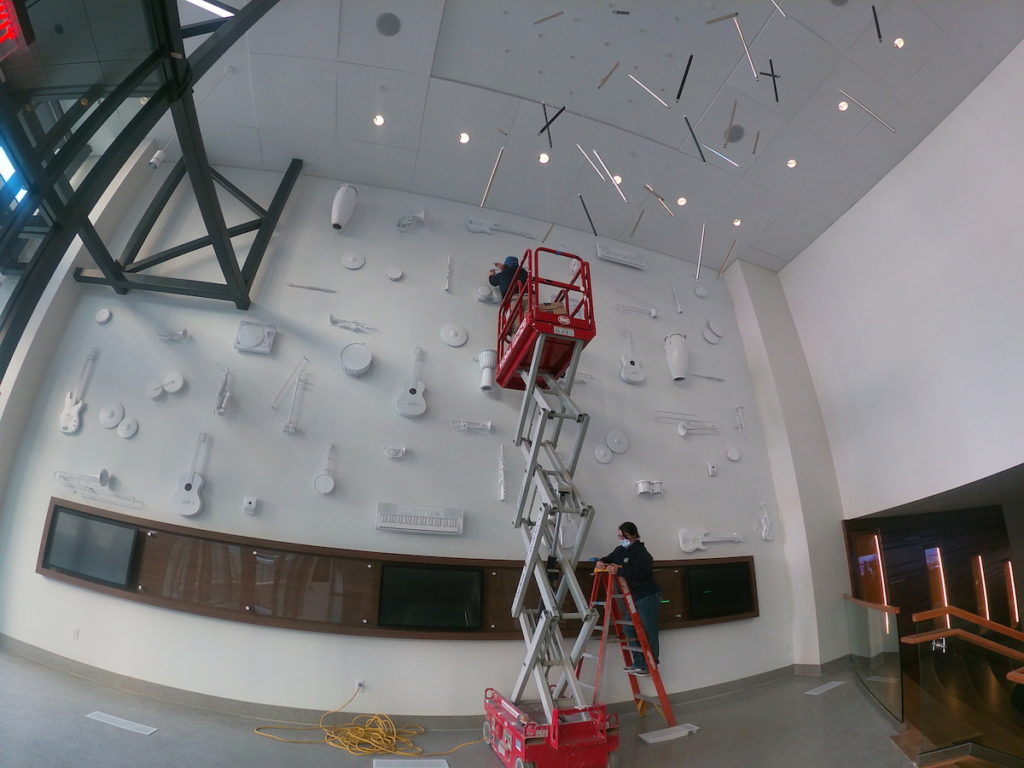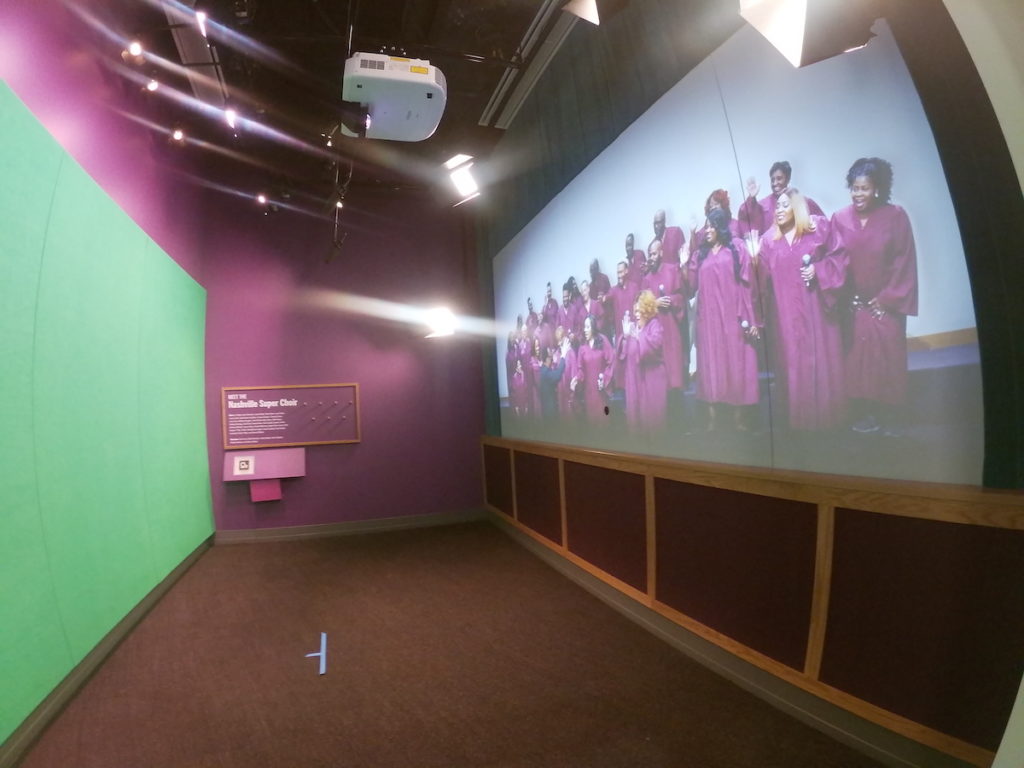
When you walk past the honky-tonks of Lower Broadway to enter the National Museum of African American Music, you become immersed in sound.
Marimba, udu, and vocal music could be an art installation on their own. But the listening experience is an introduction to the museum, just like these West African sounds are only the first step of the journey of African American music.
And opening this museum has been a journey itself. The National Museum of African American Music has operated for years as a “museum without walls” — remaining active while organizers sought community support and funding for a site in downtown Nashville. The vision for an institution was first crafted in 1998, and a site was first designated in 2002.
 Colleen Phelps WPLN News
Colleen Phelps WPLN NewsA museum worker puts the finishing touches on an instrumental decoration in the entrance of the National Museum of African American Music on Jan. 13.
Now they have finally opened their doors to the public, with a focus on hands-on experiences that tell the story of how nearly every genre in the country traces some of its roots to African American music.
CEO H. Beecher Hicks points out that the original vision was for a museum of Black music, arts and culture. But he says narrowing the focus to solely music made the museum a better fit for the city’s brand and more likely to draw tourists who are already here. And music itself drew a clear path through African American history, driving a narrative for the experience.
“Political movements and changes — all of that is reflected in and reflective of the music we’re listening to at the time,” says Hicks.

Curator Stephen Lewis demonstrates how to participate in jazz improvisation via touchscreen.
The museum also gave up its original site at the corner of Eighth Avenue and Jefferson Street, due to a lack of funds, but eventually worked with the city of Nashville to secure a spot on the site of the city’s old convention center.
In the meantime, the museum has been operating community programming at schools and for corporate groups. In 2020 these programs moved online due to COVID-19, so now interviews with luminaries like Dee Dee Bridgewater and Mary Wilson, along with the “From Nothing to Something” series documenting the ingenuity of African American instruments, are archived for years to come.
But now, in the building at Fifth and Broadway, the physical space gives visitors a more immersive experience. You don’t just see a gospel choir — you put on a robe and let Dr. Bobby Jones teach you to sing “Oh Happy Day.” Thanks to a green screen, you can see yourself in the choir, and you can use a smart wristband to share the video with your friends.
And that’s before you improvise jazz riffs, layer samples together, and freestyle your own hip-hop track. So in just a few hours, you’ve lived the ongoing story of African American music, Hicks says. Immersion meets storytelling.
“Music is not just a genre,” he says. “It’s reflective of how we live.”
 Colleen Phelps WPLN News
Colleen Phelps WPLN NewsThanks to a green screen, guests can see themselves as a member of Dr. Bobby Jones’s choir.
Touchscreens, green screens, smart wristbands — while this technology was around 20 years ago, it was not nearly as accessible then. Not to mention that the genre of hip hop has doubled its lifespan since then. Had the museum successfully opened when originally planned, it would have looked and felt very different. So, as Hicks points out, it’s all better thanks to the wait.
And now in downtown Nashville, visitors and locals have one more place to fully get lost in the music.
The National Museum of African American Music had its ribbon-cutting on MLK Day. The museum is scheduling a limited number of tours, with pandemic-related restrictions, starting at the end of the month.

